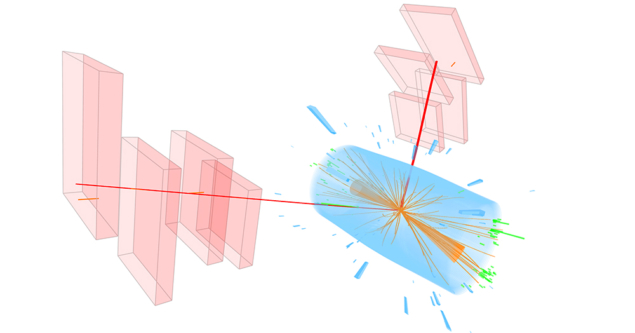
The first evidence for the coupling of the Higgs boson to a second-generation fermion, the muon, has been reported at the LHC. At the 40th International Conference on High Energy Physics, held from 28 July to 6 August, CMS reported a 3σ excess of H → μμ decay candidates compared to the expected sample under the hypothesis of no coupling between the Higgs boson and the muon. A similar analysis by the ATLAS collaboration yielded a 2σ excess for the coupling.
The latest measurements of the Higgs boson by ATLAS and CMS follow 5σ observations of its coupling to the tau lepton in 2015 and to the top and bottom quarks in 2018, all of which are third-generation fermions. Its couplings to W and Z bosons have also been established at 5σ confidence. Within present experimental accuracy, all couplings between the Higgs boson and other Standard Model particles correspond to the strength of interaction that would give the particles their observed masses, according to the Brout–Englert–Higgs mechanism. In this model, the particles acquire mass through spontaneous symmetry breaking; the W and Z as a result of a local gauge symmetry and the fermions, such as the muon, as a result of Yukawa couplings to the Higgs field – a novel type of interaction among fundamental particles that is not derived from a symmetry principle. Any deviation from the expected couplings would imply that the Higgs sector is more complicated than this minimal scenario.
Couplings to lighter particles are expected to be proportionately smaller and more difficult to observe. The decay to two muons, H → μμ, is expected to occur with a branching fraction of just one in 5000 Higgs-boson decays, and is overwhelmed by backgrounds from the Drell–Yan process.
The new results sharpen the question of why there is a hierarchy of particle masses
John Ellis
The new ATLAS and CMS analyses, which deploy the entire 13 TeV Run-2 data set, include events where the Higgs boson was produced according to four topologies gluon fusion, which accounts for the creation of 87% of the Higgs bosons observed at the LHC; vector-boson fusion; the production of a Higgs boson in association with a weak vector boson; and its production in association with a top quark–antiquark pair. Uniquely, CMS simulated the background to the vector-boson-fusion signal rather than fitting it from data – a procedure that would have incurred additional statistical uncertainty – resulting in the topology contributing roughly equal statistical power compared to gluon fusion.
Machine learning
“The first evidence in CMS was reached thanks to the excellent performance of our muon and tracking systems, and an improved signal/background discrimination with machine-learning techniques,” says Andrea Rizzi, CMS physics co-coordinator.
The signature for the decay is a small excess of events near a muon-pair invariant mass of 125 GeV – the mass of a Higgs boson. CMS reports an overall signal strength of 1.2 ± 0.4, while ATLAS finds a signal strength of 1.2 ± 0.6, with the uncertainties dominated by their statistical component. “Both measurements are compatible with the Standard Model,” says ATLAS physics coordinator Klaus Mönig. “Assuming the H → μμ coupling predicted by the Standard Model, and extrapolating the current results, the combined sensitivity could get near the observation threshold of 5σ at the end of Run 3, from 2022 to 2024.”
If there is only a single Higgs field, it should provide the masses for all the Standard-Model particles, but there may be additional Higgs fields that could make contributions to their masses. The new results therefore reduce the scope available to such multi-Higgs models, and sharpen the question of why there is a hierarchy of particle masses, says John Ellis of King’s College London. “Why is the Higgs coupling to the muon so different from its coupling to the tau lepton, whereas the couplings of the W boson to tau leptons and muons are equal to within a couple of percent? The more we learn about the Higgs, the more mysterious it seems!”
Further reading
ATLAS Collaboration 2020 arXiv.org:2007.07830.
CMS Collaboration 2020 CMS-PAS-HIG-19-006.







